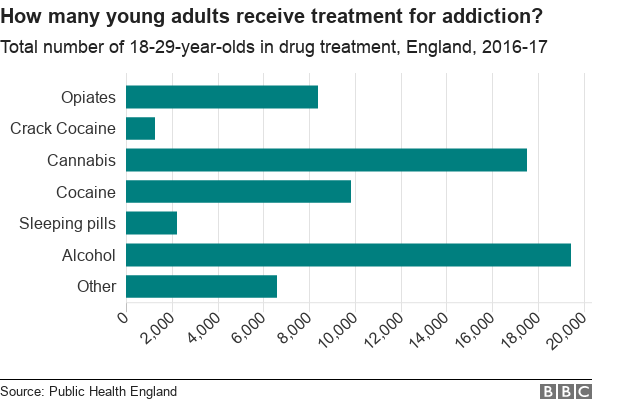Sue likewise reported that her consuming practices had altered and that she had reduced weight. She indicated that she would also monitor her consuming and seek help if required. Takes legal action against goal in the future was to return to the treatment program attended and provide assistance to other locals in the program.
Take legal action against consulted with her therapist and completed an intake interview. Based upon details gotten during this interview, Sues therapist, a deaf social employee, informed her that her drinking habits made up a moderate danger. Sue was described a psychologist for examination of her depression and eating habits. The psychologist recommended a trial on antidepressant medication and individual sessions a therapist who specialized in dealing with people who experience consuming disorders.
Takes legal action against chemical reliance therapist discussed that the philosophy of the program was to motivate her to decrease the harm she triggered herself and others through her use of alcohol. Sue was told that abstinence was the perfect goal however that she might reach this objective gradually with time or that she might potentially remove the risks included with drinking and eventually be able to consume in small amounts.
In therapy sessions, her counselor assisted her in the process of examining how her drinking had actually impacted her life including methods it had actually avoided her from pursuing her concerns in life. Sue and her counselor produced a list of Sues life top priorities and brief and long-term goals. They worked together to assess how much, how typically, and under what scenarios Take legal action against drank and what the outcomes of her drinking habits involved.
Some Known Details About What Is Frames In Addiction Treatment
She was likewise supplied with details on coping and problem fixing methods, assertiveness, communication, emotional identification and guideline, relationships, and sources of social assistance in the community - how to get free meth addiction treatment for homeless man. Upon conclusion of the 30-day outpatient treatment program Sue reported that she had actually successfully remained abstinent for thirty days. She indicated that she had gained substantial insight into how her drinking negatively affected her life and expressed a desire to pursue continuous sobriety.
Her therapist advised that she participate in AA conferences and continue her sessions with her psychologist. Debra S. Guthmann, Ed (how to become an in network provider for addiction treatment). D is director of the Division of Pupil Worker Provider at the California School for the Deaf in Fremont, CA, and the previous director and existing job director for a long-term training and conference grant at the Minnesota Chemical Reliance Program for Deaf and Hard of Hearing People located in Minneapolis, Minnesota.
Guthmann has released various articles, established materials and provided outreach and training activities nationally and globally concerning various elements of compound abuse, psychological health and other subjects connected to work Deaf and hard of hearing individuals. Katherine A. Sandberg, B.S., L.A - which treatment is supported by the rationale that heroin addiction is metabolic disorder.D.C., is program manager of the Minnesota Chemical Reliance Program for Deaf and Hard of Hearing People, situated in Minneapolis, Minnesota.
Sandberg was also involved in the advancement of a specialized variation of the Drug Abuse Resistance Education (D.A.R.E.) Curriculum and has released articles, provided at conferences and workshops, provided product advancement and provided outreach and training activities in the location of compound abuse with Deaf and hard of hearing individuals nationally.
The Buzz on How Much Did The Addiction Treatment Industry Spend In Google Adwords In 2016
D., has actually operated at the Kansas School for the Deaf, Minnesota Chemical Reliance Program for Deaf and Hard of Hearing Individuals, Research Study Medical Center-Deaf Providers, and is presently employed by the Missouri Department of Mental Health and has a Personal Practice in the Kansas City Metropolitan area. Dr. Lybarger holds degrees in Sign Language Interpreting, Addiction Researches, and Counseling Psychology.

Lybarger is also a released author and a regular presenter at regional, and national conferences in concerns associated with psychological Hop over to this website health and deafness. Alcoholics Anonymous World Services Inc. (1991 ). Twelve actions and twelve customs (45th Ed.). New York: Alcoholics Anonymous Publishing Beck, A - what disorders are observed in more than 40% of people in addiction treatment centers..T., Wright, F.D., Newman, C.F., & Liese, B.S.
Cognitive treatment of compound abuse. New York City: Guilford Press. http://elliottyysz006.huicopper.com/what-does-opioid-addiction-treatment-consist-of-things-to-know-before-you-buy Hayes, B., Blacksher, S., Dodd, M., Fox, T., Lewis, K., & Wittman, F.D. (1993 ). The social community model for the treatment of alcohol and other drug problems. A report by the Social Design Agreement Panel assembled by the California Department of Alcohol and Drug Programs, Los Angeles, CA.
( 1994 ). Models of alcoholism utilized in treatment: Contrasting AA and other point of views with which it is often confused. Journal of Studies on Alcohol, 55, 159-166. Reissman, F. (1965 ). The assistant treatment principle. Social Work, 10, 27-32.
Some Known Questions About Do You Have To Pay An Employee Who Is Seeking Addiction Treatment.
Author links open overlay panelZ.BerezaShow moreThe medical design assumes the professional psychotherapeutic help at all phases of the rehabilitation process and medicinal treatment of comorbid Alcohol Rehab Center mental illness. Assessment of the efficacy of the medical model rehab based on the scientific, mental, and social characteristics of patients at the all stages of the treatment.
The addition criteria were: age above 18 years, withdrawal status. The clients were examined 4 times: 1 during the first weeks of treatment; 2 after 45 days; 3 after 6 months; 4 after 12 months. The primary evaluation the greatest scores kept in mind in the areas: "household and social connections", "health status", "psychiatric status" and "legal aspects" got lower ratings.
Early retired patients the most high-end efficiency observed on the scale of "drug alcohol utilizing", "job/livelihood", "health status", "legal aspects", the "psychiatric status", "family and social connections" tape-recorded lower ratings. Indicators on the scale of "substance abuse", "alcohol" in this group of patients was considerably higher than patients who remain on treatment, which might suggest a possible updating of the attraction to the drugs.
In the course of the rehab process exposed favorable modifications in medical, psychological and social attributes of clients. Recommended articlesCiting short articles (0 )Copyright 2017 Published by Elsevier Masson SAS.

Getting My What Is A Treatment Fr An Opiate Addiction To Work
Date: 01/25/2017 At a time when some 2. 2 million people in the United States are addicted to heroin or prescription painkillers, and overdoses claim 10s of thousands lives every year, feels the urgency. As director of the, he champions a structured yet compassionate technique to opioid use disorderone that de-stigmatizes medication-assisted treatment.
Workplace of National Drug Control Policy for its successes. Now Stoller intends to fill out the spaces and help cement clients' gains across the country. Focusing on coordination with community doctors trained to offer buprenorphine in-office, Stoller wishes to increase access to the comprehensive, tailored help provided by opioid treatment programs (OTPs) like the Broadway Center.
But as The Johns Hopkins Healthcare facility's ambulatory dependency treatment program, the center focuses more attention on arrangement of other services, like therapy and real estate. Notably, the center requires addictions therapy and involvement in group classesonly a few for steady patients, but more for those dealing with ongoing usage. Instilling self-understanding and a hopeful attitude are essential to helping customers.
For many other centers offering psychosocial support, Stoller notes, literature reports around 25 percent adherence. Still, a major issue surfaces as individuals seek carea fundamental scarcity of upkeep therapy. It troubles Stoller that lots of neighborhood doctors certified to offer buprenorphine pick not to. He believes there is excellent chance for OTPs to motivate buprenorphine prescribing by providing doctors support and enhancing the opportunity of a positive experience.
More About How Many Treatment Options Are There For Addiction
Clients are concurrently registered at the center while receiving buprenorphine from their medical care or psychiatric doctor, extending to them the reach of a Johns Hopkins-tested benefits approach to recovery.